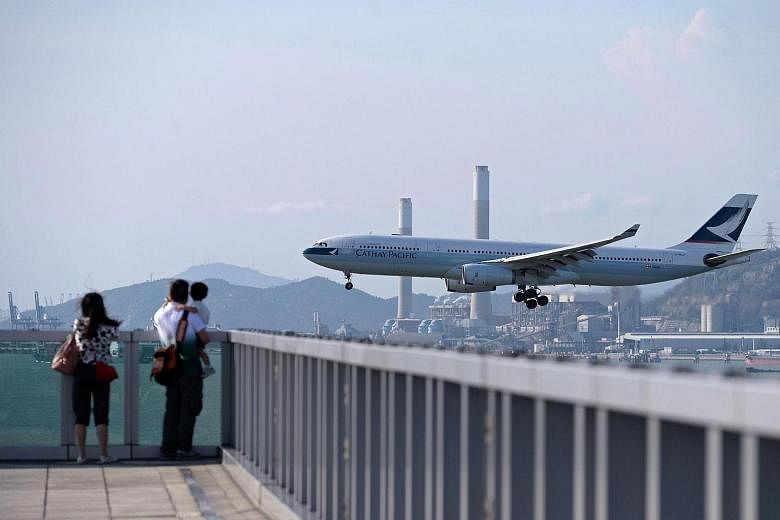HONG KONG/SINGAPORE (BLOOMBERG) - Cathay Pacific Airways, Asia's largest international airline by passengers, joined Singapore Airlines in voicing concerns of weak outlook as the two premium carriers battle competition from Chinese operators.
Performance in the first half of 2016 was "below expectations" as growth in the number of fliers failed to keep pace with an increase in capacity, the Hong Kong-based airline said in a statement to the stock exchange on Monday (July 18). While capacity increased 4.2 per cent, the growth in passenger traffic was 2.7 per cent, it said.
"Passenger revenue has been adversely affected by the reduced load factor and intense pressure on yield," Cathay Pacific's chief executive officer Ivan Chu said in the statement after trading hours. "Cargo tonnage has stabilized but yield continues to decline."
The emergence of mainland Chinese airlines and many regional budget carriers are squeezing luxury operators such as Cathay Pacific and SIA, prompting them to offer discounts to fill more seats. After reporting the lowest yield from passengers in six years in the 12 months through March, SIA CEO Goh Choon Phong said in May that yields are under pressure across the industry.
"Cathay has become less attractive as Chinese carriers offer more direct flights," said Shukor Yusof, founder of consulting firm Endau Analytics in Malaysia. "The attractiveness of Hong Kong as a travel destination may not be as before. Like Singapore Airlines, Cathay is also affected by the budget carriers."
A 35 per cent drop in crude oil prices in 2015 helped Cathay Pacific cut fuel costs and almost double its net income to HK$6 billion (S$1.04 billion), beating estimates. A rebound in crude oil prices this year may also weigh on earnings.
The combined passenger load factor for Cathay Pacific, which is controlled by Swire Pacific Ltd, and unit Dragonair fell by 1.7 percentage points to 85.5 per cent in the period, according to the statement, which didn't elaborate on yields. Mr Chu also said "foreign currency movements have been adverse," without elaborating.
"The major risk, which is not shown in the figures, is the yield," said Kelvin Lau, an analyst at Daiwa Capital Markets Hong Kong Ltd. "So far, the comments from the last few months have been consistently talking about pressure on yield, both front- and back-end," he said, adding the passenger load of 85.5 per cent "isn't too bad."
In May, SIA said its yields, or the revenue earned from a passenger flying a kilometer, was 10.6 Singapore cents in the year through March, dropping from 11.2 cents a year earlier. That damped full-year net income, which fell short of estimates.
"We see some weakness going forward," CEO Goh said at the time. "Oil price is volatile and competition continues."
Cathay Pacific shares rose almost 2 per cent to HK$12.56 on Monday. They have dropped 4.4 per cent this year, versus a 0.5 per cent decline in the Hang Seng Index.

